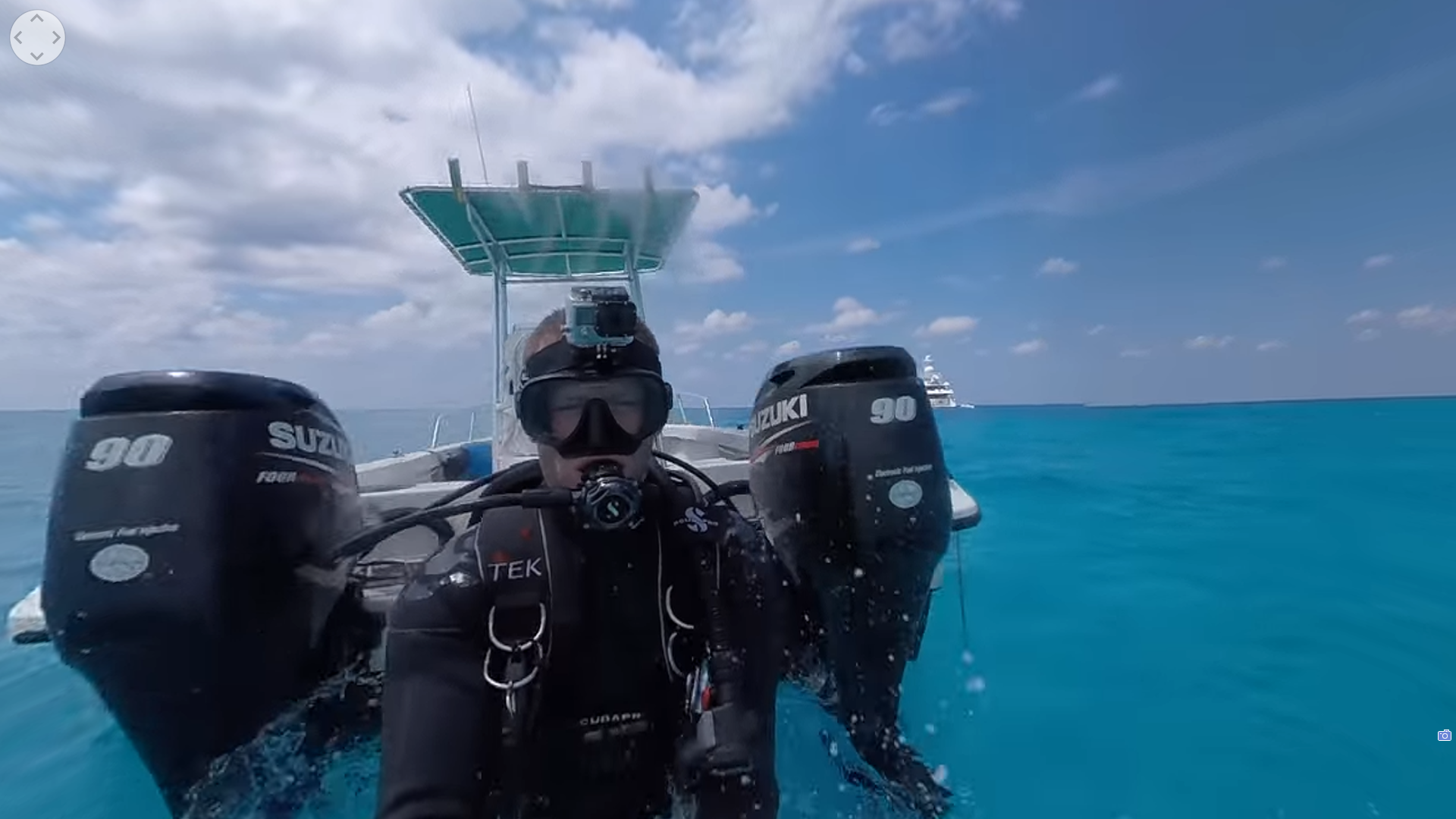
In March 2015, YouTube launched support for publishing and viewing 360-degree videos. Five years later, there are still no means to make them accessible via audio description for people who cannot see the video.
We decided that we wanted to approach this issue and develop general solutions for 360-degree media accessibility. We conducted audio description research with participants at Data & Society in New York City, and the Georgia Library for Accessible Statewide Services in Atlanta.
All of the participants were Blind or low-vision, and their feedback has informed the guidelines we have established so far. It is our hope that these guidelines will help improve accessibility for the thousands of 360-degree videos that were not designed with accessibility in mind.
Why do we need a different set of audio description guidelines for 360-degree videos?
In 2D videos, every viewer is presented with the same sequence of images, which can be professionally described during pauses in dialogue. Here is an example from the television show Chewing Gum — notice how the audio describer speaks during pauses in the characters’ conversation.
However, in 360-degree videos, viewers are free to choose which direction to face. Because each viewer can have a different experience, the visual event sequence is harder to predict. Current technology does not have a solution to provide standard audio description (i.e., no pauses in the video) based on where the viewer is looking inside of the content.
It is preferable to design content with accessibility in mind at the earliest stages of development. To remediate 360-degree media that was not originally designed for accessibility, we believe that using a live human narrator to announce the descriptions in real-time, based on where the viewer is looking, is the best solution currently available.
Guidelines for Describing 360-Degree Video
Guideline 1: Divide the video into scenes
Watch the video from start to finish and determine, in your own estimation, where the scene shifts are happening. These shifts can be technical (such as camera cuts) or thematic (such as plot pivots). Scene shifts can be designated at your discretion, but we recommend choosing obvious separators.
We found the following to be the simplest approach: On a desktop or laptop monitor, watch a 2D version of the 360-degree video. Do not alter your field of view — this will make camera cuts more apparent, and also show you which direction is “Forward” in each scene (we will discuss direction-based description in a moment).
After you have established what all the individual scenes in the video will be, write down the timestamps so that the describer will know when each scene begins and ends.
Guideline 2: Write a very brief introductory description for each scene
The very first image shown in a 360-degree video, before you initiate any changes in point of view, is the one you should describe first. This allows you to introduce the scene with some high-level description and announce onscreen text if appropriate.
360° Great Hammerhead Shark Encounter, a video with over 32 million views on YouTube, begins by showing the National Geographic logo and a diver jumping off a boat:
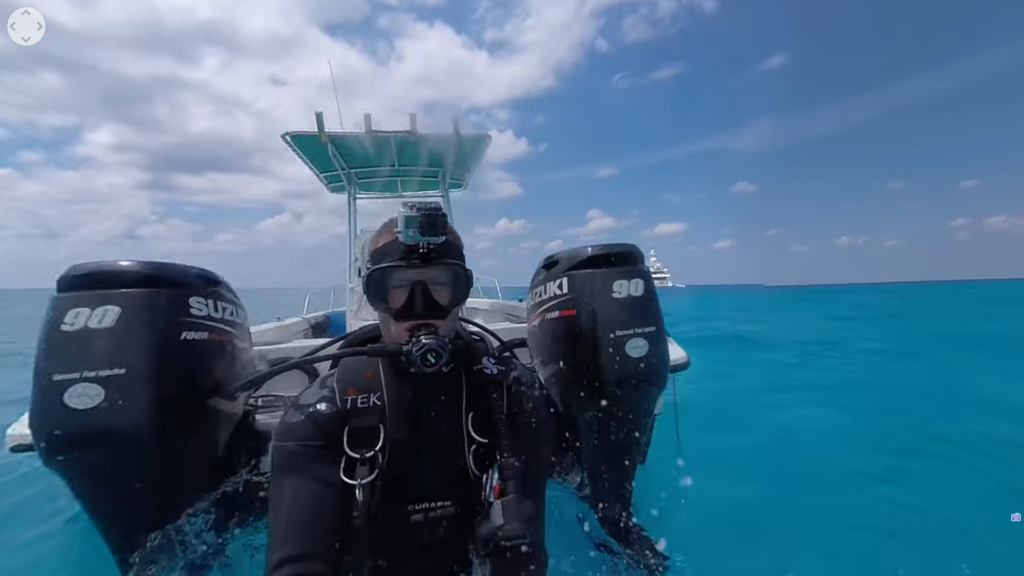
No matter which direction the viewer may face during the scene, this introductory description will be applicable.
Guideline 3: Write audio descriptions for each direction a viewer could face during a given scene
As mentioned earlier, if you start the video and do not initiate any point-of-view changes, then you are considered to be facing “Forward.”

All other directions (and their corresponding descriptions) should be derived from this initial frame of reference. For example, “Backward” should map to 180 degrees from the default “Forward” view.
Scene 1 of 360° Great Hammerhead Shark Encounter (BACKWARD):

The description for “Left” should map to 90 degrees left of “Forward.” It should be announced if the viewer turns more than 45 degrees to the left. The description for “Right” is the opposite.
Scene 1 of 360° Great Hammerhead Shark Encounter (LEFT):
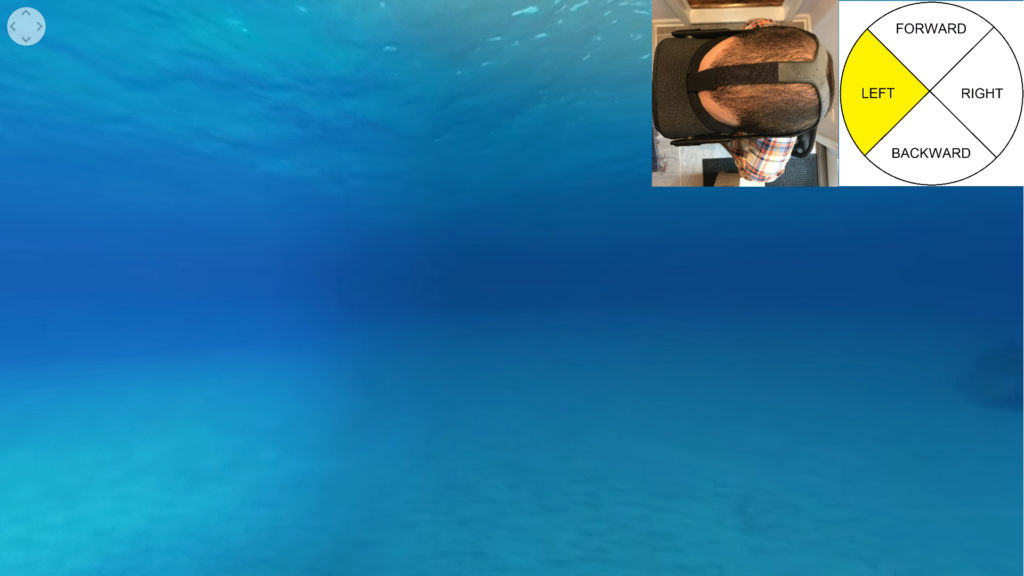
Scene 1 of 360° Great Hammerhead Shark Encounter (RIGHT):
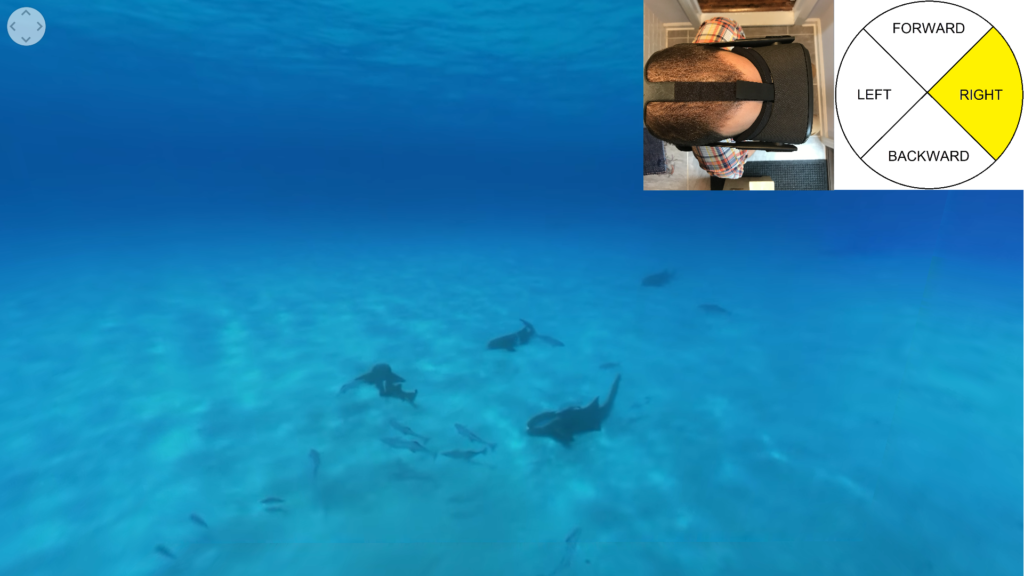
The description for “Up” should map to 90 degrees above “Forward” and the description should be announced at greater than 45 degrees, while “Down” is the opposite.
Scene 1 of 360° Great Hammerhead Shark Encounter (UP):
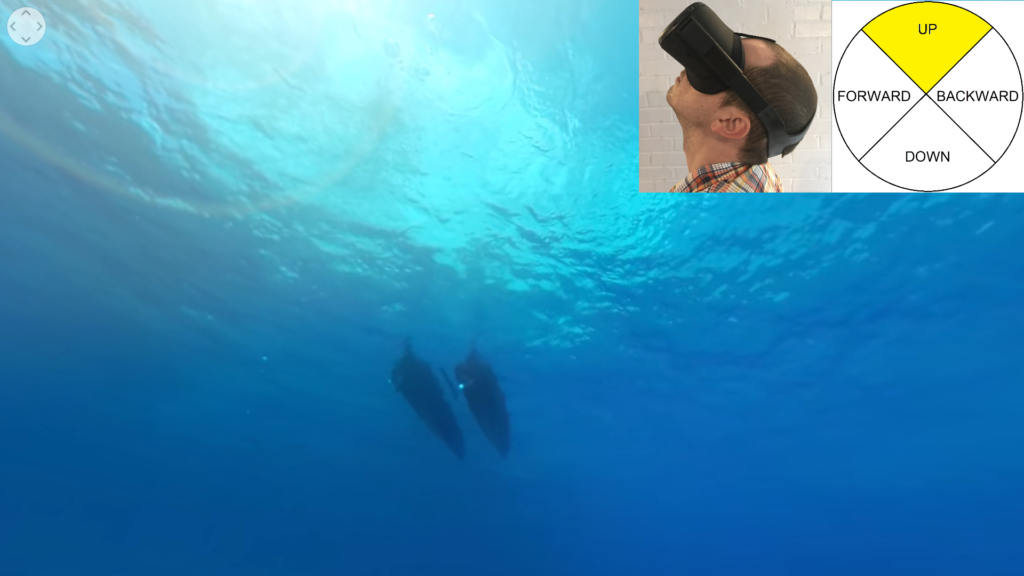
Scene 1 of 360° Great Hammerhead Shark Encounter (DOWN):
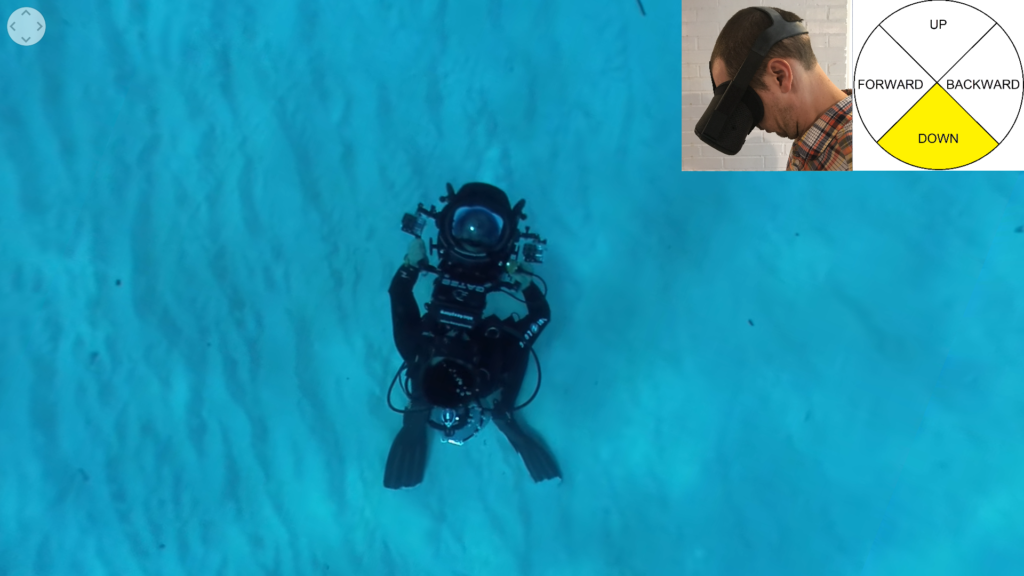
Guideline 4: Compile the audio descriptions into a single script with branching paths
This is the script template we use:
[Timestamp for scene 1]
[Introductory description for scene 1]
FORWARD: [Script]
BACKWARD: [Script]
LEFT: [Script]
RIGHT: [Script]
UP: [Script]
DOWN: [Script]
[Timestamp for scene 2]
[Introductory description for scene 2]
And so on.
Feel free to use Equal Entry’s script template for 360-degree video and let us know how it works for you.
Here is a demonstration of the audio descriptions that Equal Entry wrote for the first scene of 360° Great Hammerhead Shark Encounter. (If interested, you can read our full script.)
The viewer was facing forward during that first scene. In response, the describer provided a description prepared for someone facing forward.
Timestamp: 00:00 – 00:29
National Geographic Logo. On tropical waters, you and another scuba diver stand at the edge of your boat and jump into the ocean. Onscreen text says: “Bimini, Bahamas.”
FORWARD: A small bait box hangs from the boat by a thin cable. As you descend, your diving partner stares back at you with his hands folded. He has a camera attached to his head. Onscreen text says: “57 miles east of Miami, Florida.”
BACK: You descend to the ocean floor. Light blue water collapses into dark blue water in the far distance. Onscreen text says: “57 miles east of Miami, Florida.”
LEFT: You descend to the ocean floor. Light blue water collapses into dark blue water in the far distance. Onscreen text says: “57 miles east of Miami, Florida.”
RIGHT: You descend to the ocean floor. Gray-green nurse sharks rest on the bottom, surrounded by small remora fish. Onscreen text says: “57 miles east of Miami, Florida.”
UP: You descend to the ocean floor. The two pontoons of the boat undulate on the surface of the water. Blinding sunlight seems to be spreading like seafoam. Onscreen text says: “57 miles east of Miami, Florida.”
DOWN: You descend to the ocean floor. Another diver aims a video camera at gray-green nurse sharks on the bottom. Onscreen text says: “57 miles east of Miami, Florida.”
This is a living document and will continue to be updated. Additional guidelines will be published soon.